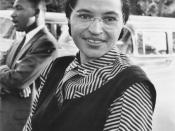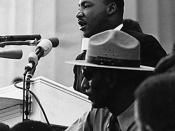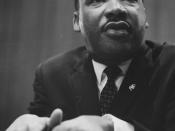I Have a Dream" Critique. On August 28th, 1963 one of America's most influential figures, Dr. Martin Luther King Jr., took stand on the stairs of the Lincoln Memorial in Washington D.C. to deliver the historical "I Have a Dream" Speech. This speech was Dr. King's public plea for peace and equality among all. Many vital practices shape the delivery of a speech; I will discuss the techniques that attribute to Dr. Kings success as a Public Speaker, and possible recommendations for perfection. Strengthened techniques within his speech include voice projection and articulation, body movement, eye contact and choice of clothing.
Delivery of a speech must include good voice projection and articulation, both of which Dr. King possesses. Throughout his "I Have a Dream" speech, Dr. King's voice projection and articulation are exemplary. For example, the repetition and enunciation of important focal points such as:"But one hundred years later, the Negro still is not free.
One hundred years later, the life of the Negro is still sadly crippled by the manacle of segregation and the chains of discrimination. One hundred years later, the Negro lives on a lonely island of poverty in the midst of a vast ocean of material prosperity. One hundred years later, the Negro is still languishing in the corners of American society and finds himself an exile in his own land so we've come here today to dramatize a shameful condition."The dramatized repetition of the phrase, "One hundred years later," shows his strong feelings of the time that has elapsed with slavery still present; a technique which effectively captures his audience. I'm certain that in preparation, and during King's speech he was aware that besides his message, his voice projection and articulation were key ideas he needed to focus on in order to deliver a...



Very true
I liked that you spoke the truth. I also liked the topic you chose and how you did not leave out a single detail.
2 out of 3 people found this comment useful.